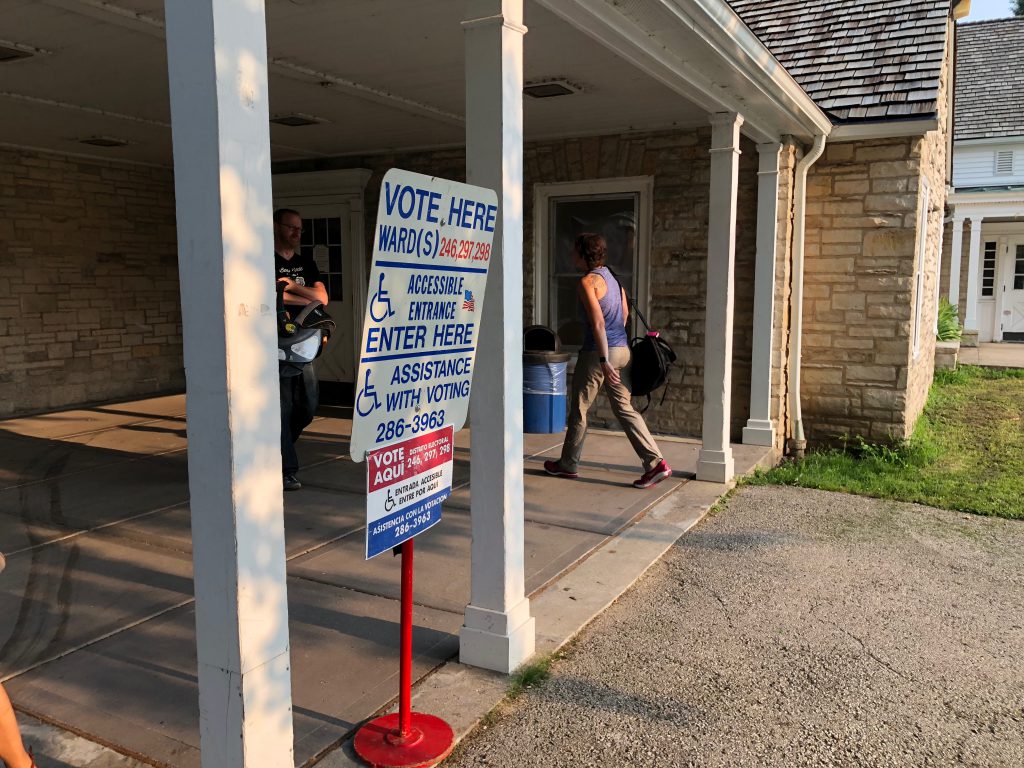Early Voting by Democrats Is Higher
Madison turnout high, new Milwaukee system attracts bigger early vote.
Early voting totals in Madison and Milwaukee suggest enthusiasm among Democrats could be high for the November election. Experts nationally and in Wisconsin have predicted that many races could come down to which party’s voters are more enthusiastic.
And they seem very enthusiastic in the City of Madison. “As of last night we had 16,148 early and absentee voters,” says Eric Christianson of the Madison City Clerk’s office. “That’s much better” than as this point before the November 2014 mid-term election and “a little better than 2016,” he says.
Given that there were 63,853 early and absentee votes in Madison for the 2016 election, it’s hard to imagine that being topped in the next 11 days. Still, the numbers look high for a mid-term election.
These numbers also compare very favorably to the August primary, where the city had only 2,331 early votes at two weeks before the election. Of course an August primary always has a very low turnout, but the city had a higher than usual turnout, driven by African American voters supporting black candidates like gubernatorial candidate Mahlon Mitchell and winning candidate for county sheriff, Earnell Lucas.
Madison has been a leader in early voting efforts, with 14 places where early voting can be done, including all nine of Madison’s public libraries, and at Edgewood College and UW-Madison Union South. Milwaukee, which is more than twice as big as Madison, but beset by budget woes, was once far behind this, with just three places for early voting: in the Zeidler building next to City Hall, at Forest Home Library, 1432 W. Forest Home Ave., and Midtown Center, 5700 W. Capitol Dr. Unlike Madison, which had early voting at two campuses, Milwaukee had none.
But Milwaukee has greatly expanded that list and now has eight locations for early voting, including one at UW-Milwaukee and one at MATC. Through Monday both campuses had about the same number — about 450 — of early votes.
By far the most early votes, 3,930, had been cast through Monday at the Midtown location, in a predominantly African American neighborhood. That bodes well, given that there was a significant fall-off in the black vote in the 2016 presidential election. The advocacy group Black Leaders Organizing for Communities (BLOC), has been going door-to-door in predominantly African American neighborhoods, and its executive director Angela Lang has said the group hopes to hit 100,000 doors by the election.
A visit to Milwaukee by former President Barack Obama could help increase black turnout. Obama will speak tomorrow at North Division, located in one of the city’s most impoverished African American neighborhoods.
Another group organizing and targeting young voters is the well-funded NextGen America, which claims to have 60 paid staff and 300 volunteers working across 26 college campuses in Wisconsin. Wisconsin has been a big success, where the group says the share of youth registrants has risen by 5.64 percent — “one of the largest in the nation.”
Sean Manning, a spokesman for the group, says that in Stevens Point, where NextGen has worked hard on the university campus, “early vote turnout is far exceeding 2014 numbers at the City Clerk’s Office. And we’re turning UW-Madison students out to vote early in significant numbers,” he adds.
Efforts by groups like Next Gen and BLOC are crucial for the Democratic Party because young voters and African American voters are much more likely to turn out in presidential years and stay home for mid-term elections like this one. And both groups lean heavily Democratic in their voting choices.
Encouraging early voting has been proven to increase turnout. “National data indicates you can boost turnout by two to three percent by having healthy early voting options,” Albrecht has noted.
Even if Democratic turnout is high, it’s no guarantee their candidates will win. That’s particularly true in the governor’s race, where incumbent Republican Scott Walker has “the best turnout operation ever built in Wisconsin,” as veteran GOP consultant Bill McCoshen told the Journal Sentinel. “He knows who his voters are. And if he can turn them out, then a high-turnout election is not a problem for him.”
But the latest Marquette Law School poll found 76 percent of Democrats were very enthusiastic about voting versus 70 percent of Republicans (and 59 percent of independents). That sounds good for Democrats — if they show up to vote.
If you think stories like this are important, become a member of Urban Milwaukee and help support real independent journalism. Plus you get some cool added benefits, all detailed here.
Murphy's Law
-
National Media Discovers Mayor Johnson
 Jul 16th, 2024 by Bruce Murphy
Jul 16th, 2024 by Bruce Murphy
-
Milwaukee Arts Groups in Big Trouble
 Jul 10th, 2024 by Bruce Murphy
Jul 10th, 2024 by Bruce Murphy
-
The Plague of Rising Health Care Costs
 Jul 8th, 2024 by Bruce Murphy
Jul 8th, 2024 by Bruce Murphy






















